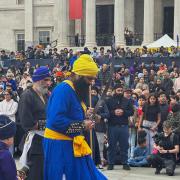
In the run up to Mother’s Day today the UK spent, approximately:
- £45 million on cards, with around 30 million cards sent
- £55 million on chocolates, with around 4 million people buying a box for their Mum
- £260 million on flowers
- £1.8 billion on personal services (Spa, pedicures etc)
These shocking numbers lead me to think about what the history of Mother’s Day is and whether our Mum’s really need us to spend all this money on them to show our love and gratitude.
Apparently, Mother’s Day celebrations date back as far back as the ancient Greeks where they would celebrate Rhea, the mother of the Gods and Goddesses, every spring. The Romans also celebrated a mother Goddess, Cybele, every March as far back as 250BC.
The date Mother’s Day is celebrated varies throughout the world - Mums in the US and many other countries enjoy their celebrations on the second Sunday in May, whilst several other countries celebrate their mothers on March 8th, which is International Women’s Day.
In the UK, Mother’s Day originated in the 16th Century as Mothering Sunday. Like many traditions and festivities, it began with a religious purpose, being held on the fourth Sunday in Lent, exactly three weeks before Easter Sunday. It was originally a day to honour and give thanks to the Virgin Mary.
The spread of Christianity throughout Europe in the 16th Century increased the celebrations and firmly put Mothering Sunday on the calendar. Throughout the year in England and Ireland people would regularly and devoutly visit their nearest church or chapel, their “daughter” church, whereas on Mothering Sunday people were required to visit their “mother” church - the main church or cathedral in a family’s locality.
It was believed to be essential for people to return home to their family to make it a true family honoured occasion. The gatherings reunited families; at this time many children would need to work away from home, from as young as 10 years old, as domestic servants or apprentices and this festival gave them the opportunity to have the day off to join their family and see their mother. Over time, the religious day increased its scope from thanking Mother Mary to a “mother” church celebration and finally opened up as an occasion to thank and appreciate all mothers; thus, creating Mothering Sunday.
The festival had decreased in popularity and was celebrated less and less in Europe however it was revived in the early 20th Century following the adoption of Mother’s Day in the US.
The US celebration of Mother’s Day was created in 1908 by Anna Jarvis in honour of her late mother. After a lot of persistence from Jarvis, Mother’s Day was made an official holiday in 1914 by president Woodrow Wilson. However, the day became more established and commercialised causing Jarvis oppose it and call it “Hallmark Holiday”.
Nonetheless Mother’s Day is firmly embedded in the calendar and has become one of the biggest days for sales and flowers and cards in the UK, US and many other countries.
Mother’s Day will mean something different to every Mum and every child however none of the Mums I have spoken to felt that spending a fortune was necessary.
Now that I know the history of Mother’s Day, it’s my belief that we should show our Mums our love and gratitude every day, in ways other than spending lots of money buying gifts on a specific day, although it is important to celebrate mums globally and give mums that special day to give them the love and attention that they give us.
Source:
British Retail Consortium
Muchneeded.com
Eparenting
Metro



























